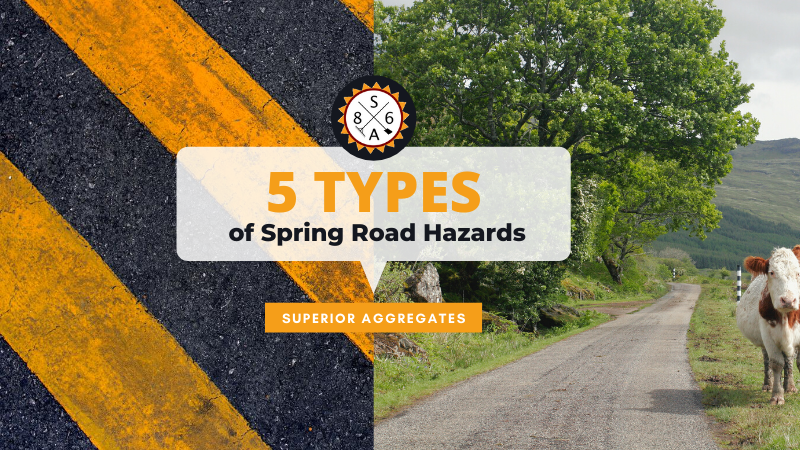
Landscaping Projects with Sand & Gravel Delivery
If you are thinking about conducting a landscaping project in your yard, they need to make sure that you have the right material. Two of the most common options that can help you get your landscaping project underway are sand and gravel. At the same time, sand and gravel come in many different shapes and forms. Therefore, you need to make sure that you understand the option so that you can make the right decision to meet your needs. Take a look at a few of the options below.
Utility Sand
One of the most common options is called utility sand. Also referred to as fill sand, this sand is rather coarse in its texture. It is a mixture of several particles including tan, white, gray, and brown. The most common use of utility sand is underneath paving stones. For example, this is a common material that is used to cushion concrete. Utility sand packs particularly well even though it is not processed at all. Even though it is not the softest sand, it is commonly found in numerous yard landscaping projects.
Beach Sand
Another option you might want to go with is called beach sand. Beach sand is incredibly fine in its texture. It is very similar to what people see on their vacation. Some of the most common locations of beach sand include playgrounds, volleyball courts, and even sandboxes. For this reason, it is commonly referred to as play sand. It is free of silica and safe for children to play in. For those who want a soft spot in their backyard, beach sand is a good choice.
Masonry Sand
Another option that might be helpful in backyard Landscaping projects is called masonry sand. Also referred to as white sand, this and comes in tan, gray, white, and beige colors. This is a clean sand that is usually used to create concrete or mortar. Masonry sand is also commonly found underneath bricks, blocks, and stones. It is much easier to work with than utility sand, which may make it less expensive. Masonry sand is also commonly found under patio and deck construction. Finally, masonry sand can also be used to create clean, white lines between bricks or blocks, which some homeowners like in their landscaping projects.
Decomposed Granite
Finally, those who might want to go with gravel instead might have heard about decomposed granite. Decomposed granite is commonly found in yard landscaping projects. In some cases, decomposed Granite can be found in the flowerbeds and around bushes, covering up the soil. In other situations, decomposed Granite could be used to line walkways and pathways. Decomposed granite can be a cost-effective alternative to traditional landscaping options. As a result, it is not unusual to see decomposed granite around flower beds and walkways. At the same time, it is not the most comfortable playing surface. Therefore, decomposed granite should not be used around sandboxes, playgrounds, or other places where children might be running around.
Choose the Right Sand or Gravel for the Landscaping Project
For those who were thinking about adding a landscaping project to the yard, it is important to come up with the right material. There are multiple types of sand and gravel available. Anyone who has a landscaping project in the near future for their yard should consider reaching out to trained professionals who can help them with sand delivery and gravel delivery before the project starts!
If you are thinking about conducting a landscaping project in your yard, they need to make sure that you have the right material. Two of the most common options that can help you get your landscaping project underway are sand and gravel. At the same time, sand and gravel come in many different shapes and forms. Therefore, you need to make sure that you understand the option so that you can make the right decision to meet your needs. Take a look at a few of the options below.
Utility Sand
One of the most common options is called utility sand. Also referred to as fill sand, this sand is rather coarse in its texture. It is a mixture of several particles including tan, white, gray, and brown. The most common use of utility sand is underneath paving stones. For example, this is a common material that is used to cushion concrete. Utility sand packs particularly well even though it is not processed at all. Even though it is not the softest sand, it is commonly found in numerous yard landscaping projects.
Beach Sand
Another option you might want to go with is called beach sand. Beach sand is incredibly fine in its texture. It is very similar to what people see on their vacation. Some of the most common locations of beach sand include playgrounds, volleyball courts, and even sandboxes. For this reason, it is commonly referred to as play sand. It is free of silica and safe for children to play in. For those who want a soft spot in their backyard, beach sand is a good choice.
Masonry Sand
Another option that might be helpful in backyard Landscaping projects is called masonry sand. Also referred to as white sand, this and comes in tan, gray, white, and beige colors. This is a clean sand that is usually used to create concrete or mortar. Masonry sand is also commonly found underneath bricks, blocks, and stones. It is much easier to work with than utility sand, which may make it less expensive. Masonry sand is also commonly found under patio and deck construction. Finally, masonry sand can also be used to create clean, white lines between bricks or blocks, which some homeowners like in their landscaping projects.
Decomposed Granite
Finally, those who might want to go with gravel instead might have heard about decomposed granite. Decomposed granite is commonly found in yard landscaping projects. In some cases, decomposed Granite can be found in the flowerbeds and around bushes, covering up the soil. In other situations, decomposed Granite could be used to line walkways and pathways. Decomposed granite can be a cost-effective alternative to traditional landscaping options. As a result, it is not unusual to see decomposed granite around flower beds and walkways. At the same time, it is not the most comfortable playing surface. Therefore, decomposed granite should not be used around sandboxes, playgrounds, or other places where children might be running around.
Choose the Right Sand or Gravel for the Landscaping Project
For those who were thinking about adding a landscaping project to the yard, it is important to come up with the right material. There are multiple types of sand and gravel available. Anyone who has a landscaping project in the near future for their yard should consider reaching out to trained professionals who can help them with sand delivery and gravel delivery before the project starts!




